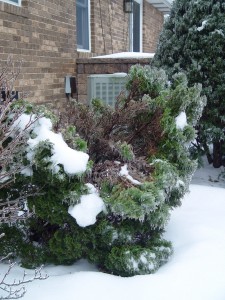January
- Seeing tiny black bugs flitting around the houseplants? They’re fungus gnats, and they can be controlled by covering the soil with a half-inch of sand and avoiding excess watering.
- Don’t toss the Christmas tree. Cut off needled branches and use to insulate roses, then shred into mulch in spring. Cut and dry trunk for future firewood.
- Reapply deer repellents to deer-favorite plants.
- Monitor houseplants for pest problems. Turn indoor bloomers every few days to keep one side from leaning toward the sun. Don’t overwater!
- Order or buy seeds. The year’s best selection is now.
- If weather permits, prune maples, birches and dogwoods before sap begins to flow.
- Take advantage of any nice days and thawed ground to edge your garden beds. If thawed ground has pushed up any young plants, tamp them back down so the roots aren’t exposed.
- Ponder garden plans for spring.
- Bring potted forced bulbs inside or take them out of the refrigerator to begin growing.
- Inspect stored cannas, dahlias, caladium and other tender bulbs. Toss any that are rotting.
- Sharpen mower blades and clean and repair garden tools if you didn’t do it in fall.
- Take cuttings of witch hazel, forsythia, crabapple, dogwood, pussy willow and other early spring bloomers and place them in water in a vase for forced indoor blooms.
- Use salt-free ice-melter or fertilizer mixed with kitty litter on sidewalks instead of plant-damaging rock salt.
- Brush snow off any plants that are being bent and potentially broken under the weight. Prune off broken branches. No need to use tar or tree paint.
- Check young trees and shrubs for gnawing damage by rodents. Wrap with hardware cloth or plastic collars.
- Pond frozen? Set a pan of hot water on the ice to thaw an opening to let out gases poisonous to fish. Consider investing in a pond heater.
- Toward the end of the month, start seeds inside of cold-weather plants such as onions, parsley, cabbage, leeks, pansies and snapdragons.
- Scout the landscape for eggs of spotted lanternflies and destroy them to reduce this year’s population that will hatch in spring. Look on outdoor furniture, rocks, car wheel wells, and fences besides just the trees.








